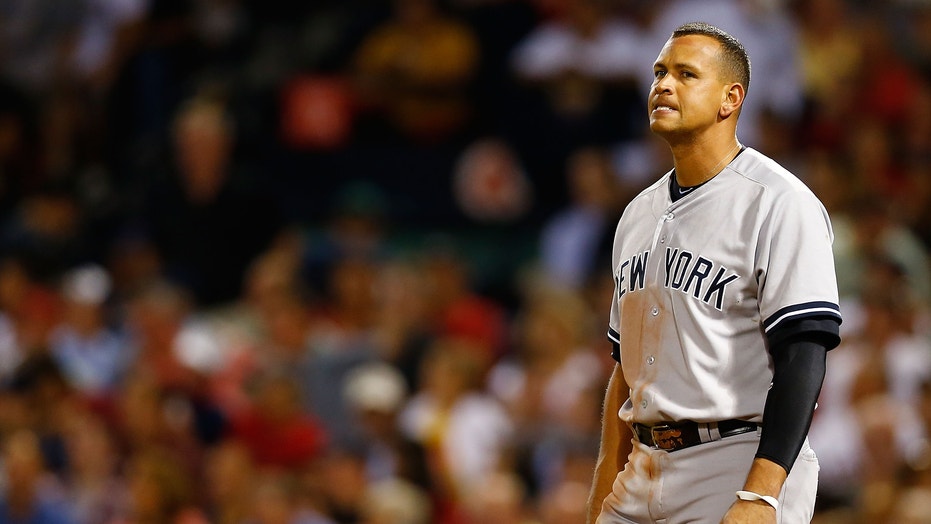What if the Latino dominance of baseball’s Major Leagues was mostly fake, built on players as physically enhanced as a Hollywood porn star?
The haunting thought following the revelation that of the baseball players recently suspended for drug use 12 of 13 are Latinos is the fear the scandal is just beginning. When the burgeoning scandal has run its course, will every kid from every dusty pueblo in Latin America who puts on spikes and pounds a glove, however innocent, be viewed with distrust and the deep suspicion that they are exceptional only because they are cheating?
More broadly, the explosive success of juiced-up superstars like Manny Ramirez and Sammy Sosa paralleled the broader success of the surging Latino population in the United States.
With pride I chronicled the surge of Latinos in recent decades in Major League Baseball, writing in 2008 how “Hispanic ballplayers have become as dominant in baseball as African-Americans are in professional basketball, so essential to the sport that it would not exist in its current form without them.”
In the breathtaking span of a single generation, the path forged for African-American youngsters by giants like Jackie Robinson, Willie Mays, Hank Aaron and other immortals was washed aside by the brown tsunami from South-of-the-Border and especially the Caribbean.
The ‘Big’s’ bulged with Latino players like brothers Matty, Felipe and Jesús Alou, Luis Tiant, Rod Carew, Rafael Pameiro, José Reyes, Alfonso Soriano, Albert Pujols, Alex Rodriquez, David ‘Big Papi’ Ortiz, Pedro Martinez and Bernie Williams.
By the end of the 1999 season, nine of the top ten hitters in the American League were Latino. They were 25 percent of all major leaguers and growing, and according to Marcos Bretón, author of “Fields of Broken Dreams: Latinos and Baseball” in Colorline magazine, most of them “come from overwhelming poverty, a reality that Major League Baseball avidly exploits.”
Bretón profiled Miguel Tejada, then the Oakland A’s shortstop acquired for just two thousand dollars. Ten years later, the five-time All Star and 2002 American League MVP became the first high-profile player to be convicted of a crime stemming from baseball’s steroid era, sentenced to a year probation for misleading Congress.
Black participation in baseball fell. As black kids followed the dream of Michael Jordan to the playground basketball courts, Spanish kids seeking to emulate their millionaire heroes took the field on sand lots throughout the Americas. Typically whippet-quick, with dash and bat-snapping power, Latinos ultimately filled MLB rosters and slots on All-Star teams.
More broadly, the explosive success of juiced-up superstars like Manny Ramirez and Sammy Sosa paralleled the broader success of the surging Latino population in the United States.
As on the diamond, so in American society writ large. The era of expanding Latino influence was upon us.
Now comes this undeniable, inexcusable, bummer reality. The doper ballplayers are almost all Latinos, mostly from the Dominican Republic. And they are part of a long running but low-decibel scandal that besmirches the memory of pre-steroid Latino legends like the best ever ‘Great One’ Roberto Clemente, the barrier-busting “Cuban Comet” Minnie Miñoso, and the deeply honorable, best relief pitcher ever Mariano Rivera.
And it is worse than you think. Remember that the current Biogenesis scandal is just one sorted chapter of a big dirty book. None of these recently suspended players even failed a drug test; a snitch connected to a shabby ‘anti-aging’ clinic in Miami took them down. So if all of the dirty 13 had passed their drug tests what does that imply about the rest of MLB? How many more dopers are out there? And what percentage of them will be Latino?
This current Latino Connection was telegraphed more obviously than a rookie’s fastball. Talk about racial profiling. At least as far back as May 2005 ESPN.com ran a story by senior writer Tom Farrey headlined, “Hispanic Baseball Players Failing Steroid Tests at Higher Rate [Not-Their-Fault Alert].”
Not their fault, as in every kid over the age of 16 knows exactly what the score is when it comes to the PED de hoy; they know what is being applied, swallowed or shot. For goodness sake most of the crap they’ve been using is legal and even available over the counter in the D.R.
Farrey’s story was eight years ago, datelined Santo Domingo, the Dominican capital, and it mentioned a demonstration in front of the New York offices of MLB following the deaths of two Dominican teens who took toxic drugs they hoped would give them the edge to make it into the Big Leagues, one getting his poisonous PED from the local veterinarian.
Farey noted back in 2005 that Baseball Commissioner Bud Selig testified before a Congressional sub-committee examining steroid use in sports that, “Anyone taking these things has been told time and time again.”
Four years later, in 2009, ESPN.com investigative reporter Mike Fish wrote another fine expose titled, “Steroid problem reaches critical mass in the D.R.”
Fish wrote how, “According to Major League Baseball, more than half of all pro baseball players who tested positive since the start of the 2005 season –169 of 289, or 58.5 percent– hail from the Dominican Republic, and that includes major and minor leagues, as well as those who play in the Dominican and Venezuelan summer leagues.”
Don’t pretend we didn’t know. Alex Rodriguez is just the biggest, baddest, richest tramposo (cheater).

